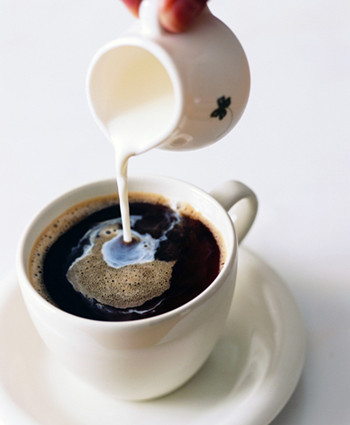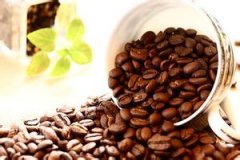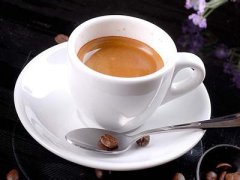The blending of single mixed coffee the skill of blending coffee beans

The mixed coffee here is a kind of single coffee (pure drinking coffee). As the name implies, mixed coffee is a combination of several different coffee beans. The process of combining several different coffee beans is the blending process of comprehensive coffee.
The reason why there is no need to mix such words here is that the blending process of mixed coffee is not a simple mix, which should be matched according to the different characteristics of different coffees. This is because the taste of integrated coffee is not like a single variety of coffee with a distinct personality, but rich, balanced and long taste. This needs to analyze the characteristics of different varieties of coffee, cup performance, but also according to the characteristics of coffee beans and roasted taste performance to match, so that too obvious characteristics are neutralized, will be as rich as possible to show the flavor.
For example, the classic Java-mocha coffee is a mixed coffee.
Here are two matching theories that were once popular.
The first theory is to divide coffee beans into several different types, such as strong personality type, mild and smooth type, suitable for matching base type, and so on. Such a blending method requires an accurate understanding of the type of coffee beans used, and a quite familiar grasp of the performance of each kind of coffee in the cup, so as to determine the proportion of various coffee beans in the blending.
Another theory is to mix different coffees according to their performance in cups with different roasting degrees. No matter which type of coffee it belongs to, it has different flavor performance under different roasting degrees, and even the coffee with strong personality will greatly reduce its strong personality under the deeper roasting degree, while the mild coffee with the least personality will show its indistinct personality characteristics under the shallow roasting degree. Matching according to different baking degrees is carried out under such understanding and understanding. But it also has a high requirement for the blender to accumulate the knowledge of baking, and the roasting technology needs to be skillful in order to make a good comprehensive coffee.
Both theories have their own reasons, but they also have their own limitations. The first one stubbornly divides coffee into different types, but ignores the performance of coffee flavor under different roasting degrees, while the second does not consider that each kind of coffee has its own most suitable roasting degree to achieve its own characteristics.
Blending is not a simple addition and subtraction. Blending requires baristas to have a correct understanding of the characteristics of each kind of coffee and the best flavor performance at which degree of roasting. On this basis, after continuous matching experiments, we can slowly find out the most suitable matching formula. But it should be said that there is no fixed rule to specify what proportion of A coffee must be mixed with what proportion of B coffee and C coffee is the best mixed coffee.
The blending of comprehensive coffee is an art in itself, and art needs to be free. The following article will introduce several good matching options for you. (this article is reproduced)
Important Notice :
前街咖啡 FrontStreet Coffee has moved to new addredd:
FrontStreet Coffee Address: 315,Donghua East Road,GuangZhou
Tel:020 38364473
- Prev

The temperature of extraction water has a great influence on the production of hand-brewed coffee.
Extraction water temperature has a great impact on the production of hand-brewed coffee, not only affecting the taste, different water temperature will have an impact on the production process. We say the suitable water temperature is about 90 ℃. So is the extraction water temperature of hand-brewed coffee just like this? How can the extraction method be changed at higher water temperatures so that the taste of the coffee is not too different? First of all, 90
- Next

Technical explanation of coffee pressing powder, filling powder and powder thickness
The scale only tells you which direction is thick and which direction is fine. When you find the right powder thickness, the effect of the scale will show a little bit. 1. Powder thickness XX bean grinder scale should be adjusted to? The scale is only a reference. Different brands have different grinding scales, and the performance of bean grinders of the same brand and model under the same scale is not exactly the same. It is still understood and compared in this way.
Related
- Detailed explanation of Jadeite planting Land in Panamanian Jadeite Manor introduction to the grading system of Jadeite competitive bidding, Red bid, Green bid and Rose Summer
- Story of Coffee planting in Brenka region of Costa Rica Stonehenge Manor anaerobic heavy honey treatment of flavor mouth
- What's on the barrel of Blue Mountain Coffee beans?
- Can American coffee also pull flowers? How to use hot American style to pull out a good-looking pattern?
- Can you make a cold extract with coffee beans? What is the right proportion for cold-extracted coffee formula?
- Indonesian PWN Gold Mandrine Coffee Origin Features Flavor How to Chong? Mandolin coffee is American.
- A brief introduction to the flavor characteristics of Brazilian yellow bourbon coffee beans
- What is the effect of different water quality on the flavor of cold-extracted coffee? What kind of water is best for brewing coffee?
- Why do you think of Rose Summer whenever you mention Panamanian coffee?
- Introduction to the characteristics of authentic blue mountain coffee bean producing areas? What is the CIB Coffee Authority in Jamaica?

